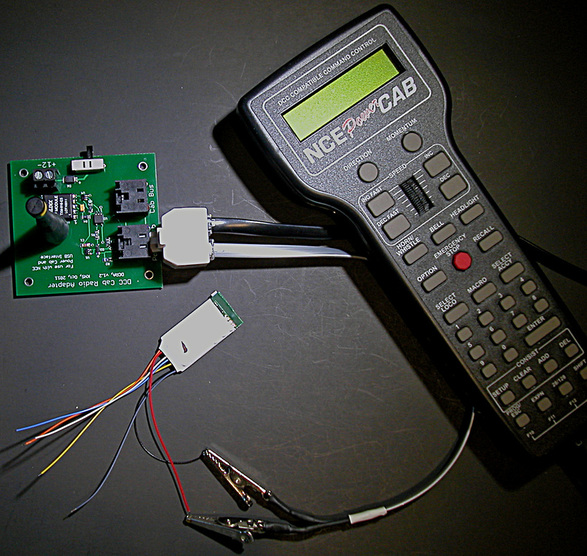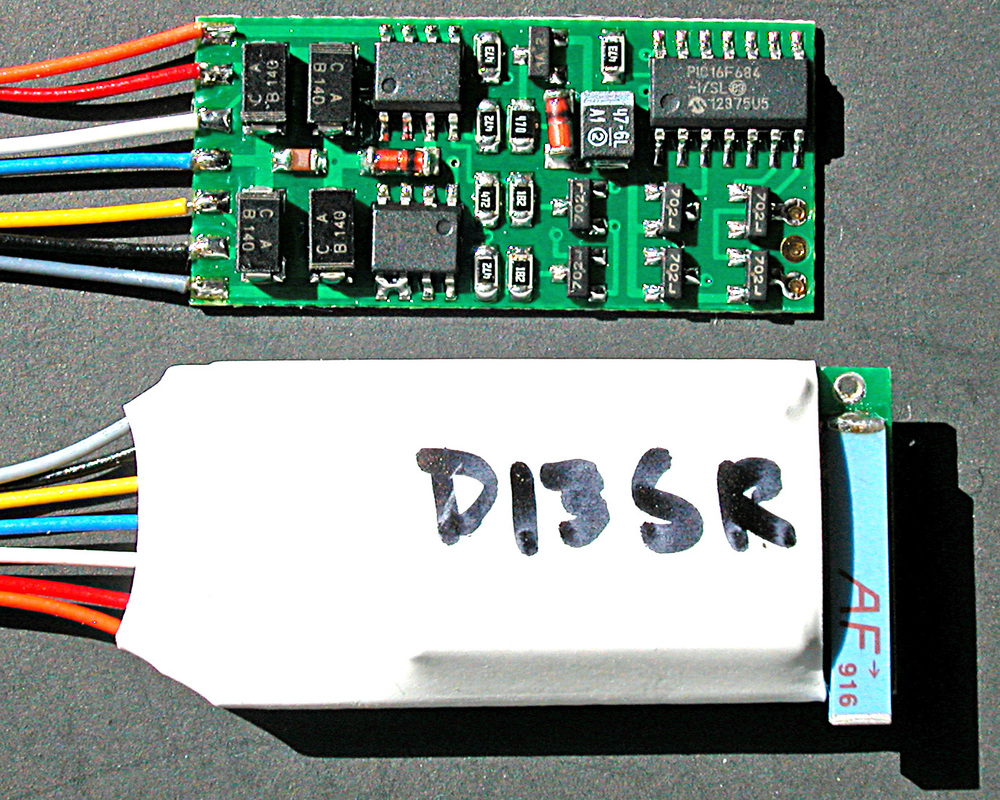With radio control, programming decoder CVs has been concern. I've previously explained that RAPA (the Radio Programming Adapter) can be used to write CVs by radio.
The question is this:
Can we use RAPA to read CV values? The answer is yes,
by using the setup illustrated in the following photo.
The question is this:
Can we use RAPA to read CV values? The answer is yes,
by using the setup illustrated in the following photo.
The green circuit board is RAPA and a 6-wire, 2-way splitter is plugged into RAPA's PowerCab socket. RAPA also requires a 12 volt DC power supply. The small shrink-wrapped object in center of photo is an S-CAB radio-ready decoder. The splitter allows PowerCab to communicate radio commands via RAPA and at the same time connect to the decoder through its red/black wires (the right and left rail inputs in conventional thru-the-track DCC).
To perform CV programming, a motor must be connected to decoder orange/gray wires. When RAPA power is turned on, PowerCAB boots up and begins DCC output. It's best to send a few speed commands to be sure radio communication is good and the motor responds correctly. Now press PowerCab's 'PROG' button repeatedly until 'Programming Track' is displayed. Press 'ENTER', then '2' to select a CV number. Enter a number, press 'ENTER' and, after a brief pause, PowerCab will display the selected CV's value. At this point, either press 'ENTER' to escape or enter a desired value followed by 'ENTER' to change the CV value.
This brief explanation is certainly not an adequate set of instructions for reading/writing CV values. I just want to make it clear that S-CAB radio-ready decoders and RAPA now offer the same CV programming features as are available using a DCC programming track. We can read CVs just as easily as writing them.




